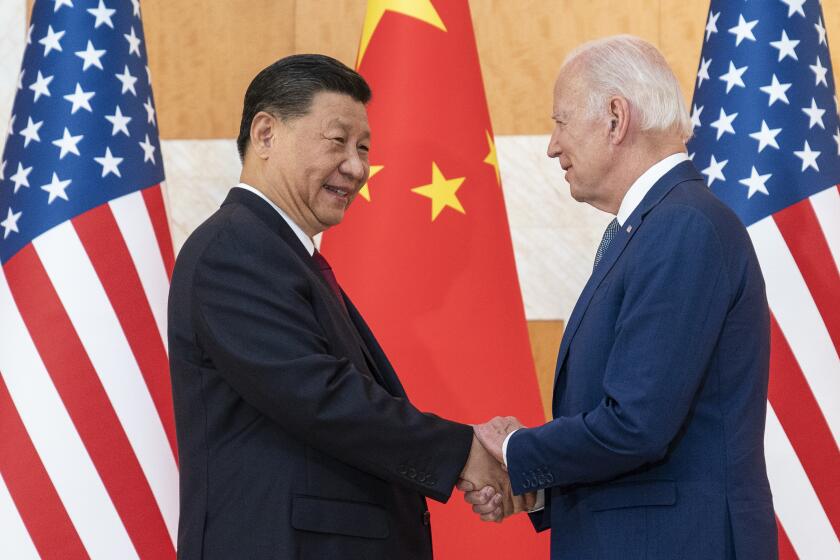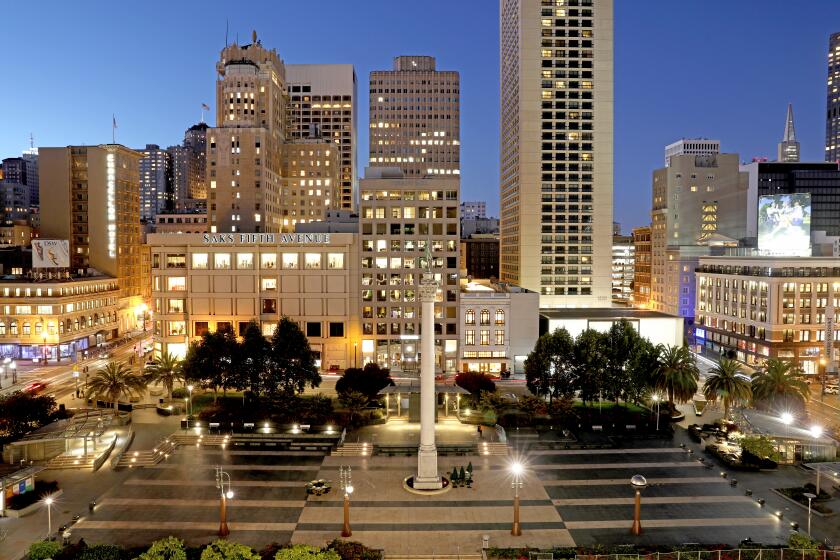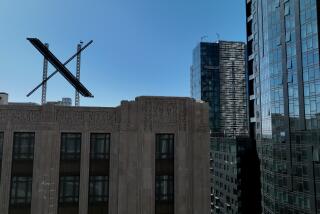‘They’re clearing out the homeless people’: San Francisco gets ready for arrival of world leaders
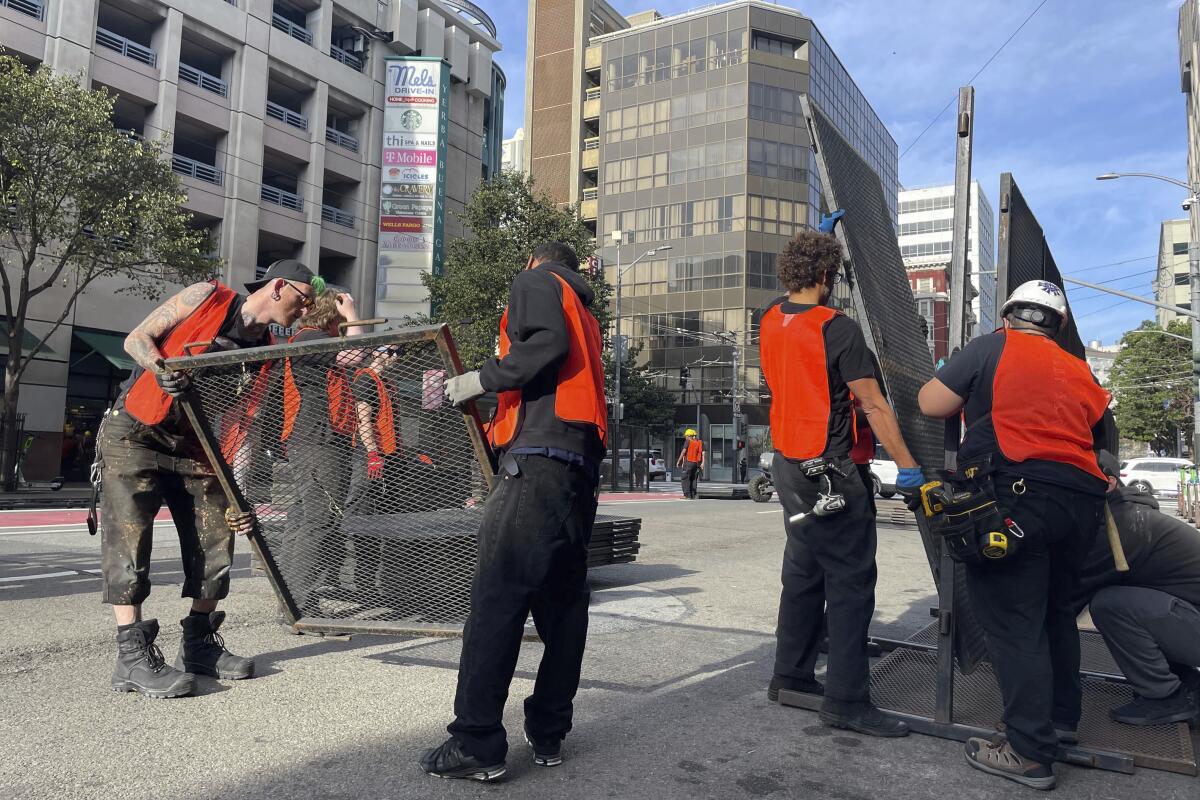
- Share via
SAN FRANCISCO — Crouching at the entrance of San Francisco City Hall, Jason Jacobs brushed gold paint onto the ornate doorway of the Beaux-Arts building.
“Whether I paint the gates or not, they’re gonna get their breath taken away,” said Jacobs, a San Francisco native who often marvels at the stunning architecture.
Fresh paint. Street cleanings. Homeless sweeps. Colorful art. Workers like Jacobs beautified the city, days before politicians, executives and journalists from around the world descend on San Francisco for the Asia-Pacific Economic Cooperation conference. From Saturday to Nov. 17, the international event is expected to bring more than 20,000 people to the city and attract thousands of protesters.
APEC is made up of 21 member economies, including the U.S., China, Japan, Russia and Canada. The members account for nearly 50% of global trade and 40% of the global population, giving the U.S. a big platform to promote policies that advance free and open trade in the Asia-Pacific region.
A highly anticipated meeting between President Biden and Chinese President Xi Jinping during the summit could also help ease tensions between the two countries.
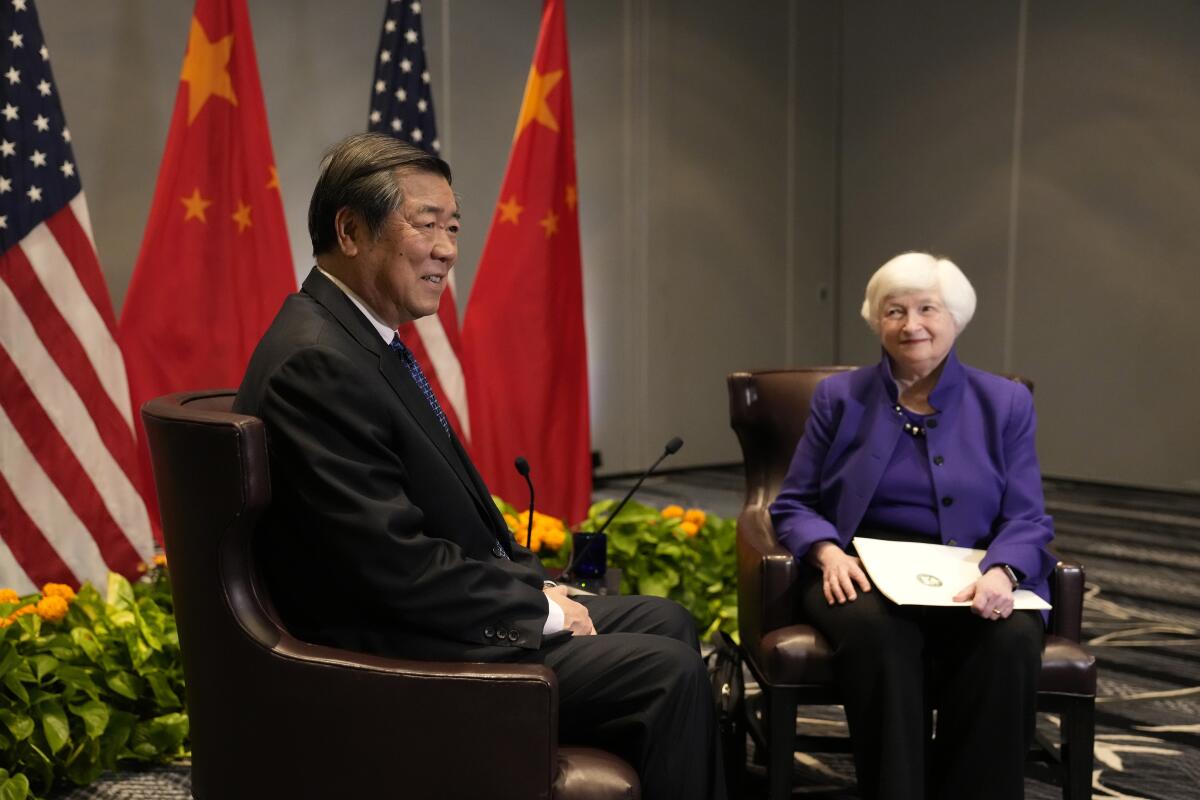
Though the wide-ranging meeting is not expected to produce any major breakthroughs, White House officials say it will cover a host of economic and security issues underlying U.S.-Chinese tensions, including trade, technology exports, human rights and Chinese aggression in the South China Sea and near Taiwan, the self-governing island that Beijing claims as its own. The president will also raise areas of cooperation — including climate change and countering narcotics trafficking — as well as Beijing’s role in the Israel-Hamas conflict and Russia’s invasion of Ukraine.
The stakes are high for the U.S. but also for San Francisco, which is hosting the APEC summit for the first time. It’s the biggest gathering of world leaders in San Francisco since 1945, when representatives from 50 nations signed a charter that established the United Nations.
The global spotlight will shine on a city filled with stark contrasts — home to billion-dollar tech companies and streets lined with homeless encampments.
“You can go to the deepest, darkest parts of the Tenderloin or you can go to the top of the Hyatt Regency,” said Jacobs, a painter at City Hall.
Blocks away from the Moscone Center, where the summit’s main events will be held, Christie Palominos sorted through her belongings. Palominos said she’s trying to figure out what she wants to keep before she moves into permanent housing. Piles of clothing, a shopping cart, bags, coloring books and a variety of objects surround her.
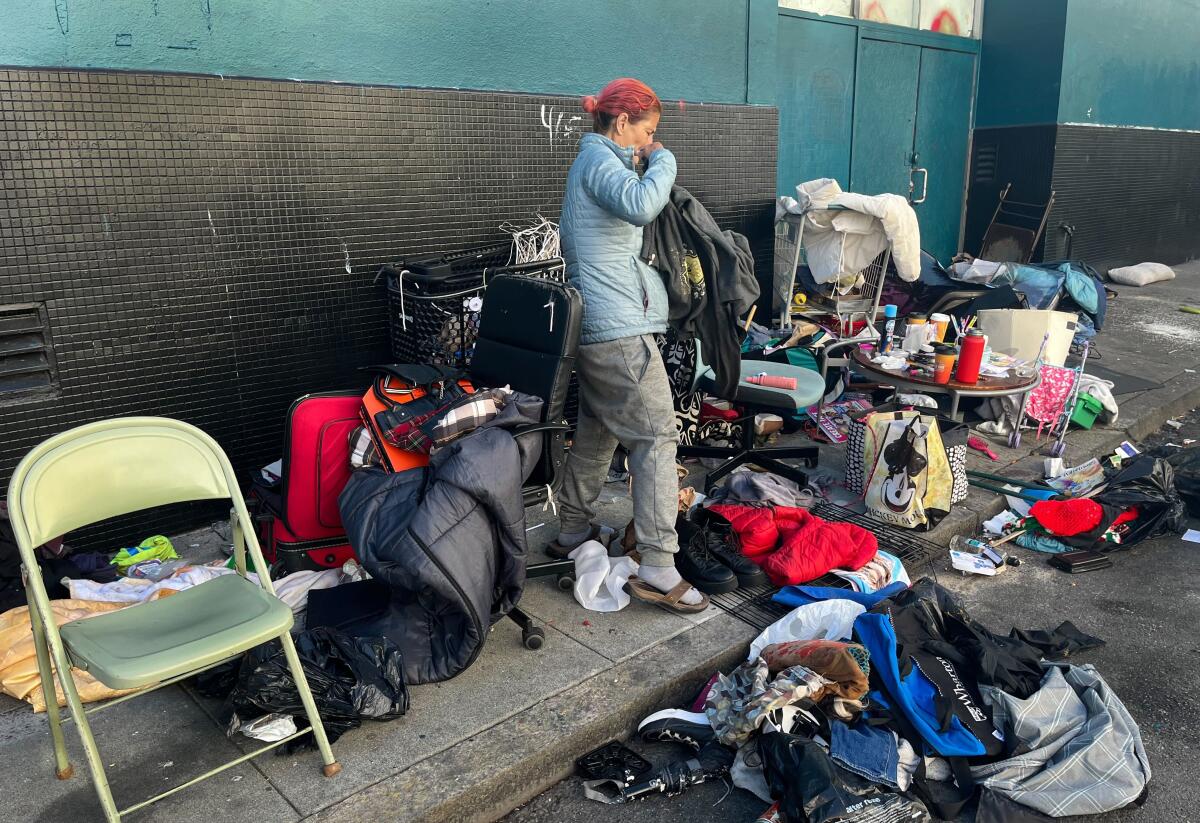
Palominos, 47, didn’t know world leaders would be in town, but she said one of her homeless friends has been asked by the same police officer to move multiple times.
“They’re clearing out the homeless people because they don’t want them to see this,” she said.
Grappling with family issues, drug addiction and mental health problems, Palominos said she’s been hopping among San Francisco homeless shelters for more than a year. It’s not easy for homeless people to find a spot in a shelter.
“Usually I stay as long as I can, but it’s kind of hard because there are certain people who pick on you. They think they’re better than you,” said Palominos, who has a bruise under her eye and a bandage wrapped around a bloody finger.
On the streets, Palominos said she’s seen traumatic acts of violence like a shooting and stabbing. Struggling with addiction to crystal meth, Palominos said she’s been clean for five days.
President Biden and Chinese President Xi Jinping will hold a long-anticipated meeting Wednesday in the San Francisco Bay area.
“Walk a day in my shoes,” she said. “I guarantee that some of these rich people who walk around in these high-rises wouldn’t survive.”
Jennifer Friedenbach, executive director of the Coalition for Homelessness, said her organization has been hearing about more homeless encampment sweeps ahead of the international conference. With shelters seeing spaces already filling up or limiting openings, Friedenbach said it’s “really frustrating” because the city is just displacing groups of homeless people when they’re moved around. Instead, advocacy groups were hoping for more temporary housing for the homeless during the conference.
“They want to clean up the city’s image and use this conference as a way to draw back tourism,” she said. “These efforts never work because folks don’t have disappearing power. People are out there because there’s not enough housing. There’s not enough shelter.”
In 2022, 7,754 people experienced homelessness in San Francisco. About 43% or 3,357 were staying in shelters, according to city data.
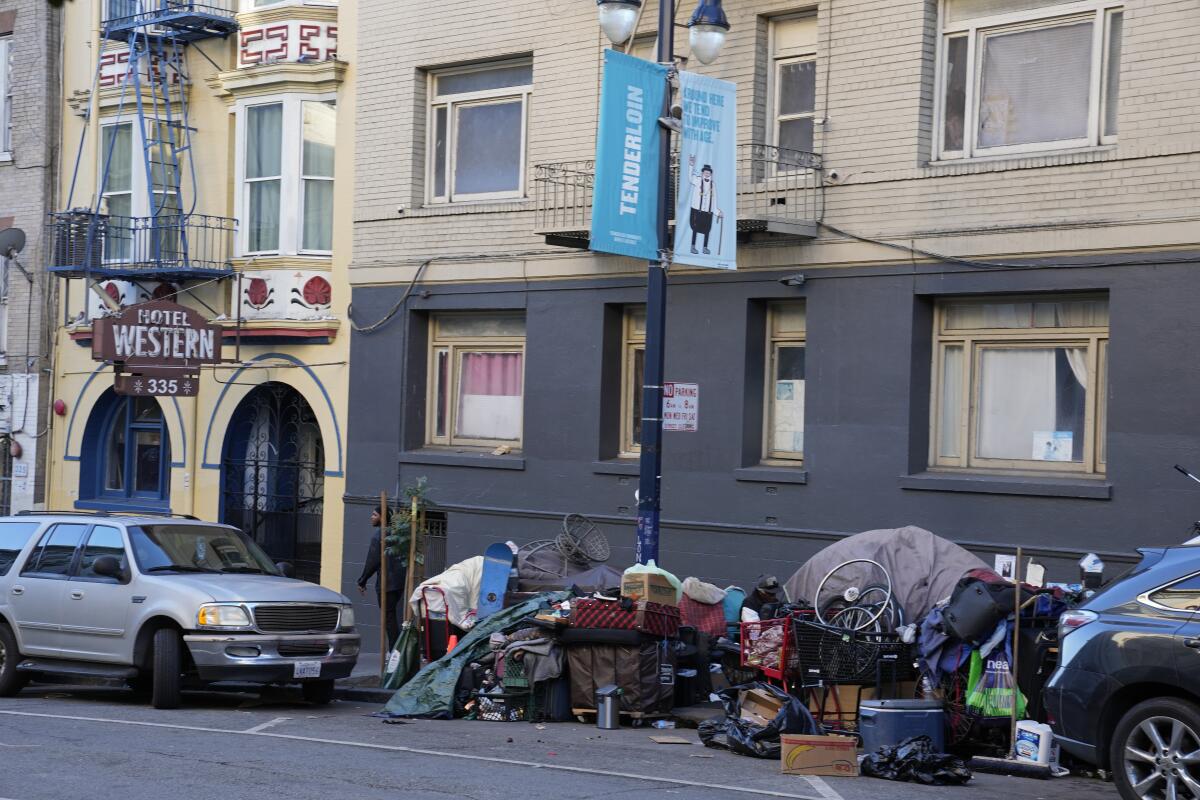
Homelessness has been a contentious issue in San Francisco. In December, a federal judge temporarily blocked the city from clearing certain homeless encampments without offering shelter. The court order stemmed from a 2022 lawsuit the Coalition on Homelessness filed against San Francisco, alleging that city workers are trying to drive homeless people out of town and are seizing and destroying their property “with the express purpose of removing visible signs of homelessness from San Francisco’s street.” The city is still allowed to clear streets for emergencies, health and safety reasons and to temporarily clean.
Emily Cohen, deputy director for communications and legislative affairs at the San Francisco Department of Homelessness and Supportive Housing, said in an email the city isn’t expanding shelter capacity just for the summit but did set aside funding to add roughly 300 shelter beds as winter approaches.
The Interfaith Winter Shelter, which has a site at Natoma and 8th streets, is scheduled to be open during the summit and the city is expanding shelter capacity at three adult congregate shelters, she said.
“When our community hosts events, like APEC, we want to put our best foot forward,” she said.
That hasn’t stopped Republicans from holding up San Francisco as an example for what happens when Democratic politicians are in charge. In June, Republican presidential candidate Ron DeSantis, the governor of Florida, shot a campaign ad that portrayed San Francisco as city that has “collapsed because of leftist policies.”
“We came in here, and we saw people defecating on the street,” said DeSantis, standing next to a graffiti-sprayed buildings. “We saw people using heroin. We saw people smoking crack cocaine, and you look around, the city is not vibrant anymore. It’s really collapsed because of leftist policies.”
The city has been struggling to recover from the aftermath of the COVID-19 pandemic, when San Francisco grappled with office and business closures partly due to government-mandated shutdowns that affected a vibrant downtown filled with retailers, restaurants and bars.
San Francisco Mayor London Breed said in a press conference Thursday that the tattered urban images people see on social media about San Francisco capture a snapshot in time in certain neighborhoods, ignoring the rest of the picturesque city.
“I see a lot of beauty all over San Francisco…,” she said. “My hope is that people will have the opportunity to experience San Francisco for themselves and tell the whole story.”
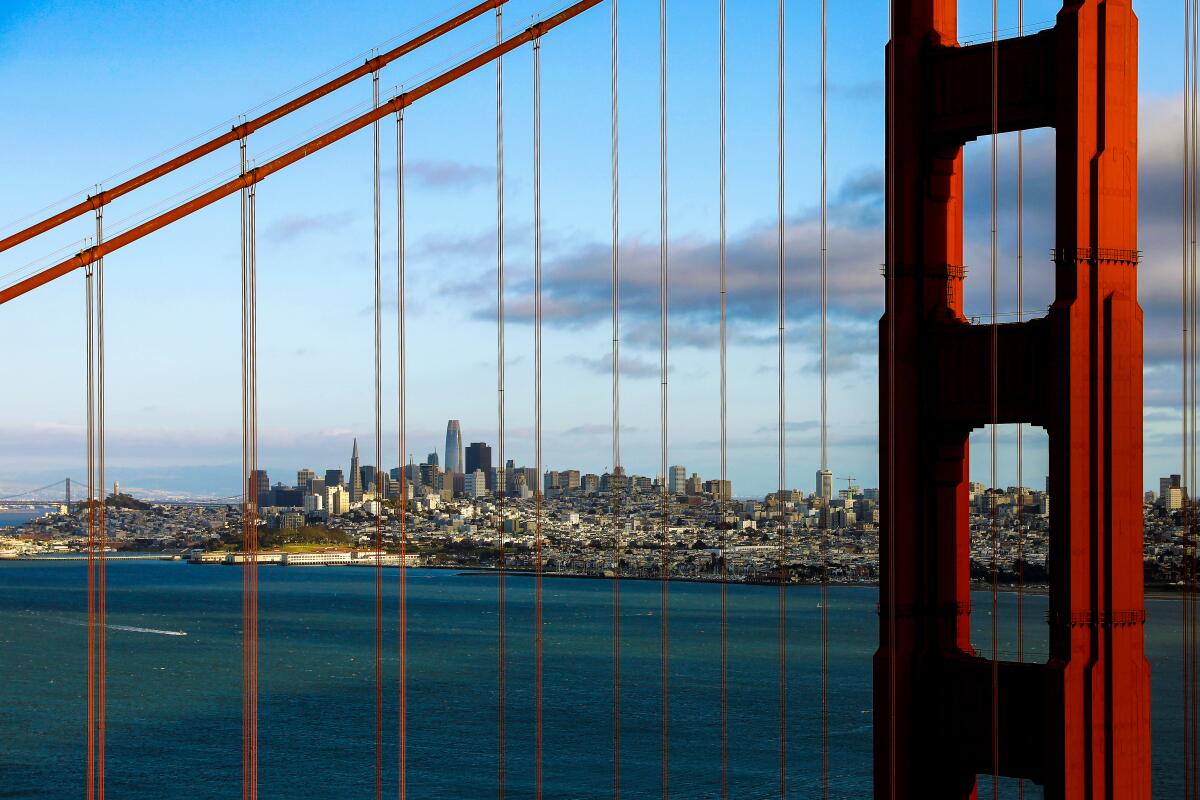
Later in the day, Breed and Gov. Gavin Newsom unveiled a new plant nursery and education center in the Soma neighborhood.
Newsom, who met China’s president last month, said before a big event like the APEC summit everything’s got to “get dialed up” just like when people clean up their house before they have visitors.
“This place is beloved and its best days are in front of it, not behind it,” he said. “And all those doomsdayers. All those negative folks. You know what? They haven’t offered anything.”
Still, business closings have also heightened fears about the future of downtown San Francisco. Major retailers including Nordstrom, T-Mobile, Whole Foods and Anthropologie have left amid concerns about less foot traffic, sluggish sales and safety. The pandemic also fueled more online shopping, which meant people didn’t feel the need to visit stores as often. Still, businesses such as Ikea, are also opening new stores in San Francisco and artificial-intelligence startups have been flocking to the city.
The spate of store closures near Union Square, a tourist destination and the heart of San Francisco’s shopping core, has concerned business leaders and economists alike.
San Francisco Chamber of Commerce President and CEO Rodney Fong said cities are re-imagining what their urban centers feel like as technology changes the way people work. With APEC expected to generate $53 million for the local economy, according to the San Francisco Travel Assn., businesses throughout the city also have an opportunity to rope in more sales.
“This is a really important moment for San Francisco and we’re really looking forward to showcasing all the innovations,” Fong said.
Ahead of the conference, the Webster Street pedestrian bridge, which was once light gray, is now freshly painted red in Japantown. Two new decorative crosswalks were being installed in Chinatown and North Beach. The green grime that once covered the San Francisco Museum of Modern Art, located near the conference, is gone.
On a sunny day before the summit, workers washed the streets and placed new grass at the Yerba Buena Gardens because of heavy use over the summer. A green fence, scheduled to be removed Tuesday, wrapped around the park with a sign that read “Improvements in Progress.”
At the Moscone Center, some of the city’s most picturesque spots are on signs about the event. The Palace of Fine Arts. City Hall. The Golden Gate Bridge, next to blue water and a sandy beach. “APEC is going to be EPIC,” one sign reads.
Longtime San Francisco natives like Jacobs can’t envision living anywhere else.
Times staff writer Courtney Subramanian contributed to this report.
More to Read
Sign up for Essential California
The most important California stories and recommendations in your inbox every morning.
You may occasionally receive promotional content from the Los Angeles Times.
